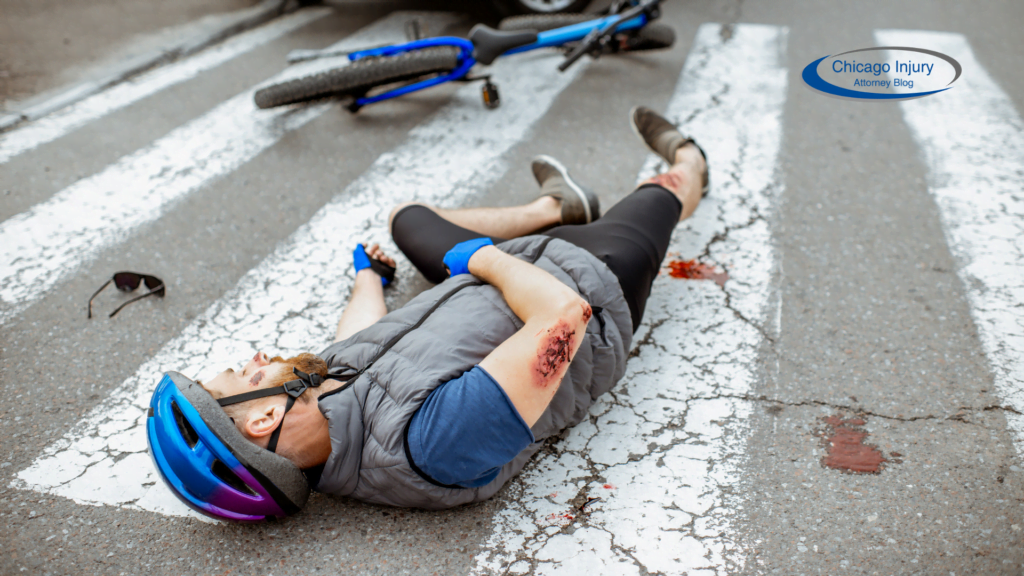Bicycling is a popular and healthy mode of transportation, but it comes with its own set of risks, including accidents. In this article, we will explore the legal rights of bicyclists, road safety tips, and the importance of understanding bicycle safety.
From the significance of wearing helmets to defensive driving techniques, we will cover everything you need to know to reduce the risk of bicycle crashes. We will discuss the interaction between cyclists and drivers, promoting safe riding behaviors, and accessing additional safety resources.
Stay tuned as we delve into the world of bicycle safety.
Introduction to Bicycle Accidents
Introduction to Bicycle Accidents provides an overview of the risks and legal implications surrounding bicycle safety and accidents, particularly within the state of Illinois.
Bicycle accidents are unfortunately all too common, with thousands of cyclists being injured or killed each year due to collisions with vehicles or other hazards. Understanding the legal rights of cyclists is crucial in ensuring they receive proper compensation in case of an accident.
In Illinois, there are specific laws and regulations in place to protect cyclists and hold drivers accountable for negligence. These laws include the requirement for motorists to maintain a safe distance from cyclists, yield the right of way when necessary, and ensure proper signaling and awareness of their surroundings to prevent accidents.
Road Safety for Bicyclists
Road Safety for Bicyclists focuses on the importance of helmets, adherence to traffic rules, and vigilance while cycling on roads shared with motorists.
Wearing a helmet while cycling not only protects the head from potential injuries in case of accidents but also sets a crucial example for other riders. Following traffic regulations ensures smooth interaction with other road users and minimizes the risk of collisions. Maintaining visibility through reflective gear or bright clothing enhances a cyclist’s presence on the road, especially during low-light conditions or inclement weather, reducing the chances of being overlooked by drivers.
Legal Rights of Bicyclists
Understanding the Legal Rights of Bicyclists involves knowing the relevant laws in Illinois, including the rights to compensation in case of accidents.
In Illinois, cyclists have the right to the same protections as any other road user. The state’s laws require drivers to yield the right of way to cyclists and provide a safe passing distance. In case of an accident involving a cyclist, the legal framework allows the injured party to seek compensation for medical expenses, lost wages, pain, and suffering. It is crucial for cyclists to understand their rights and responsibilities under Illinois law to protect themselves in case of an accident.
Safety Tips for Bicyclists
Safety Tips for Bicyclists offer guidance on enhancing visibility, utilizing proper equipment, and effective communication through hand signals while cycling.
Regarding visibility, wearing bright and reflective clothing or adding reflectors to your bike can significantly increase your presence on the road. Ensuring that your bike is equipped with front and rear lights, especially when cycling in low-light conditions, is crucial for safety.
For equipment, choosing a helmet that fits properly and meets safety standards is essential. Regularly maintaining your bicycle – checking brakes, tire pressure, and ensuring all parts are functioning well – is key to a safe ride.
Communication through hand signals plays a vital role in informing other road users of your intentions. Learning and using standard hand signals for turning, stopping, and changing lanes helps create a safer cycling environment for everyone.
Understanding Bicycle Safety
Understanding bicycle safety encompasses knowledge about essential equipment, recognizing hazards, regular maintenance practices, and the benefits of reflective gear for visibility.
Proper equipment such as helmets, lights, and reflective clothing can significantly reduce the risk of injury while riding.
Identifying potential hazards like potholes, slippery roads, or distracted drivers is crucial for safe cycling.
Regular maintenance routines, including checking brakes, tire pressure, and ensuring proper chain lubrication, can enhance the longevity and efficiency of a bike.
Embracing reflective gear increases visibility during low-light conditions, making the rider more noticeable to other road users.
It is essential to combine all these elements to ensure a secure and enjoyable biking experience.
Importance of Helmets
The importance of helmets cannot be overstated, as they play a crucial role in preventing head injuries and ensuring cyclist safety.
When engaging in outdoor activities such as cycling, wearing a helmet is not just a recommended precaution but an essential one. Helmets act as a protective barrier between the head and potential impact, significantly reducing the risk of severe head trauma in the event of a fall or collision. Helmets are specifically designed to absorb and dissipate the force of an impact, safeguarding the fragile structures of the head and brain.
It is proven that helmets can reduce the severity of head injuries by a substantial margin and even save lives in critical situations.
Therefore, investing in a quality helmet and making it a non-negotiable part of your cycling gear is a simple yet effective way to prioritize safety and injury prevention during your rides.
Reducing the Risk of Bicycle Crashes
Reducing the risk of bicycle crashes involves understanding potential hazards, practicing defensive driving techniques, and complying with traffic laws to minimize the chances of accidents.
One critical aspect of reducing crash risks is to be aware of the hazards present on the road, such as potholes, uneven pavements, and blind spots. By recognizing these dangers, cyclists can proactively navigate around them to prevent accidents.
- Another effective strategy is to utilize defensive driving tactics by anticipating the actions of other road users. This involves maintaining a safe distance, signaling intentions clearly, and being prepared for unexpected maneuvers.
- Strict adherence to traffic laws is essential for ensuring safety on the road. This includes obeying speed limits, yielding when required, and respecting traffic signals and signs.
By combining these approaches, cyclists can significantly enhance their safety while enjoying their rides.”
Precautions Before Riding
Taking precautions before riding includes planning the route, ensuring visibility through proper attire, and maintaining predictability in movements to enhance safety.
When planning the route, consider factors like road conditions, traffic density, and potential hazards to choose a safe and efficient path.
To ensure visibility, wear bright colors, reflective gear, and use lights in low-light conditions to make yourself more noticeable to other road users.
Signaling your intentions clearly and obeying traffic rules can help in maintaining predictability, reducing the chances of sudden maneuvers that can catch others off guard.
Defensive Driving Techniques for Bicyclists
Utilizing defensive driving techniques, cyclists can improve their vigilance on the road, enhance predictability in movements, and reduce the risk of accidents.
One crucial defensive driving technique for cyclists is maintaining a safe distance from vehicles, allowing ample time to react to sudden changes in traffic. Using hand signals to indicate turns and stops contributes to predictability, making it easier for drivers to anticipate cyclist movements. Another effective strategy is scanning the road ahead for potential hazards, such as potholes or debris, to avoid accidents. Being mindful of blind spots and positioning themselves conspicuously on the road can significantly enhance safety for cyclists.
Practicing Predictable Riding
Practicing predictive riding involves maintaining consistency in movements, identifying potential hazards, and effective communication with other road users for increased safety.
Consistency in movements allows cyclists to be easily anticipated by drivers and pedestrians, reducing the risk of collisions. By predictably signaling turns and obeying traffic laws, cyclists become more visible and can better navigate through traffic.
Hazard recognition is crucial for identifying road obstacles, unstable surfaces, or erratic drivers, allowing cyclists to proactively avoid potential dangers.
Clear and assertive communication methods such as hand signals, eye contact, and verbal cues can help convey intentions to others on the road, fostering a safer cycling environment.
Recognizing the significance of predictability, hazard recognition, and effective communication will greatly enhance the overall safety of cyclists on urban streets and beyond.
Enhancing Riding Skills
Enhancing riding skills entails continuous improvement in cycling abilities, proper equipment usage, and regular maintenance checks to ensure optimal performance.
Riding skills can be enhanced by incorporating a variety of training techniques such as interval training, hill repeats, and group rides to improve strength, endurance, and technique.
- Regarding equipment, ensuring proper bike fit, regularly checking tire pressure, and keeping your bike clean and lubricated can significantly improve your performance and prevent unexpected mechanical issues.
- Regular maintenance checks should include inspecting brakes, gears, and chain for wear and tear, and scheduling routine tune-ups with a professional mechanic to keep your bike in top condition.
Sharing the Road: Interaction with Drivers
Sharing the road addresses the crucial interaction between cyclists and motorists to ensure mutual safety and respect on the road.
Encouraging mutual understanding and adherence to traffic rules benefits both cyclists and motorists by reducing the risk of accidents and conflicts. Communication plays a vital role in creating a harmonious environment where each party acknowledges and respects the presence of the other. Proper signaling, maintaining safe distances, and being cautious at intersections are essential practices for coexisting peacefully on the road.
Promoting Safe Riding Behaviors
Promoting safe riding behaviors involves fostering a culture of commitment to bicycle safety, accessing relevant resources, and understanding Illinois-specific regulations.
By instilling a sense of dedication to safety, cyclists can help create a safer environment for themselves and others on the road. Utilizing available resources such as safety gear, lights, and reflective clothing can greatly enhance visibility and reduce the risk of accidents.
Commitment to Bicycle Safety
Demonstrating commitment to bicycle safety involves embracing best practices, following safety guides, and learning from past accidents to prevent future mishaps.
“
Cycling enthusiasts can showcase their dedication to safety by prioritizing their own well-being and that of others on the road. By strictly adhering to traffic rules, wearing helmets, and using proper signaling techniques, they contribute significantly to a safer cycling environment. Utilizing cycling guides to understand road rules, traffic signs, and proper bike maintenance also plays a crucial role in enhancing cycling safety. Reflecting on past accidents and learning from them helps riders avoid similar pitfalls and make informed decisions on the road. By continuously educating themselves and practicing vigilance, cyclists create a culture of safety that benefits everyone.
Accessing Additional Safety Resources
Accessing additional safety resources provides cyclists with valuable guides, tips, and information on selecting the right equipment for a safe riding experience.
Cyclists can explore online guides that cover topics ranging from proper helmet fitting techniques to effective signaling practices. These resources often offer detailed explanations and visual aids to enhance understanding. Valuable safety tips may include advice on navigating through traffic, secure locking techniques for bike storage, and essential maintenance checks.
Cyclists can benefit from recommendations on protective equipment such as reflective gear, lights, and mirrors to increase visibility on the road, as well as protective padding for risky rides. Remember, being well-informed and well-equipped is key to a safe and enjoyable cycling experience.
Exploring Further Topics in Road Safety
Exploring further topics in road safety delves into various aspects such as route planning, legal rights after accidents, and measures for improving visibility on the road.
Efficient route planning is crucial in ensuring safe and smooth journeys. By utilizing GPS technology and real-time traffic updates, drivers can avoid congested areas and potential hazards, ultimately reducing the risk of accidents.
Understanding your legal rights post-accidents is essential for seeking proper compensation and support. It’s advisable to document the incident, exchange information with other parties involved, and consult with legal professionals to navigate through insurance claims and settlements.
Enhancing road visibility plays a significant role in preventing collisions and ensuring driver awareness. Implementing strategies such as using reflective markers, maintaining clean headlights and taillights, and driving with headlights on during inclement weather or low-light conditions can significantly reduce the chances of accidents.
Conclusion
Prioritizing bike safety, understanding accident risks, and knowing legal rights are essential for a secure and enjoyable cycling experience.
Ensuring that your bike is well-maintained and fitted with proper safety gear such as helmets and lights is crucial for preventing accidents.
Familiarizing yourself with common causes of bike crashes like distracted driving and the importance of following traffic rules can significantly reduce the risk of accidents.
Being aware of your legal rights in case of a collision or injury can help you navigate through the aftermath of such incidents and seek appropriate compensation or justice.
Frequently Asked Questions
What should I do if I am involved in a bicycle accident?
If you are involved in a bicycle accident, it is important to stay calm and assess the situation. Check for any injuries and call for medical assistance if necessary. It is also important to exchange contact and insurance information with the other party involved. If possible, take photos of the accident scene and any damages to your bike or injuries you may have sustained.
Do I have legal rights if I am injured in a bicycle accident?
Yes, you have legal rights if you are injured in a bicycle accident. You may be entitled to compensation for any medical expenses, lost wages, and pain and suffering. It is important to consult with a personal injury attorney to understand your rights and options for seeking compensation.
What are some common causes of bicycle accidents?
Some common causes of bicycle accidents include driver negligence, poor road conditions, and defective bicycle parts. It is important to practice safe cycling habits and always be aware of your surroundings while riding a bicycle.
Can I still receive compensation if I was partially at fault for the bicycle accident?
Yes, you may still be able to receive compensation even if you were partially at fault for the bicycle accident. In some cases, the other party may be found to be more at fault and you may still be entitled to a portion of compensation for your injuries and damages.
What safety tips should I follow to prevent bicycle accidents?
To prevent bicycle accidents, always wear a helmet and use lights and reflectors when riding at night. Obey traffic laws and signals, and make sure your bike is in good working condition. It is also important to stay visible to drivers and make eye contact when possible.
Is it necessary to hire a lawyer for a bicycle accident case?
While it is not legally required to hire a lawyer for a bicycle accident case, it is highly recommended. An experienced personal injury lawyer can help navigate the complex legal process and ensure that you receive fair compensation for your injuries and damages.





